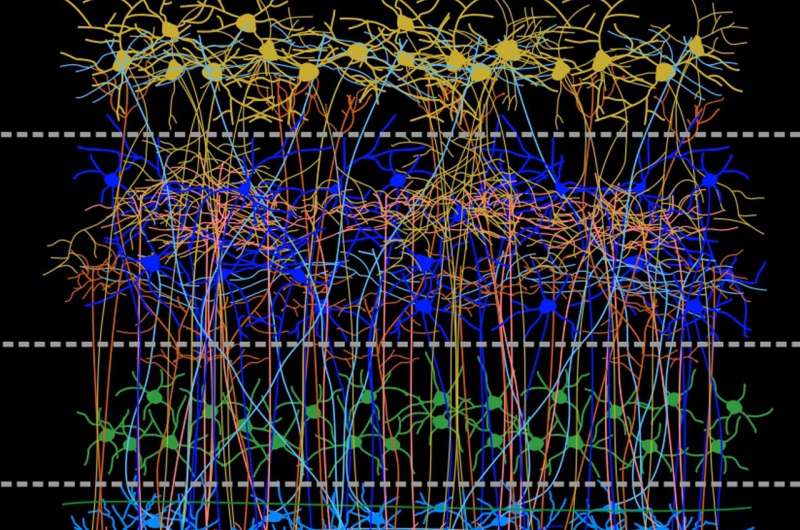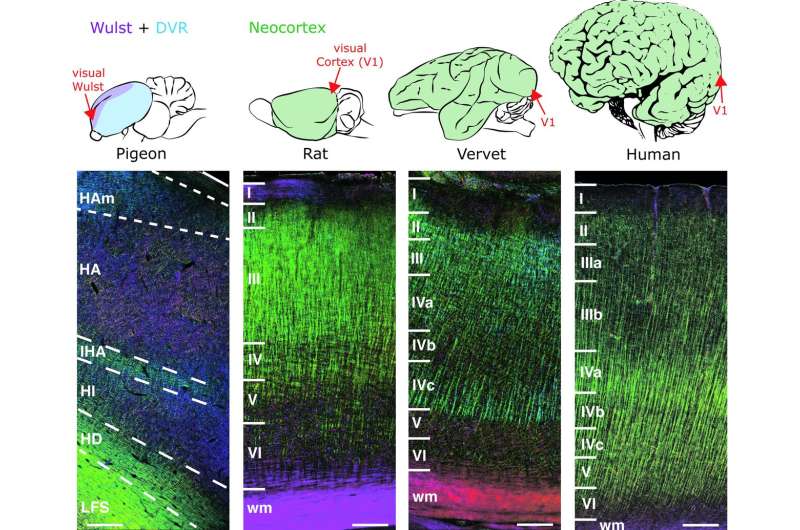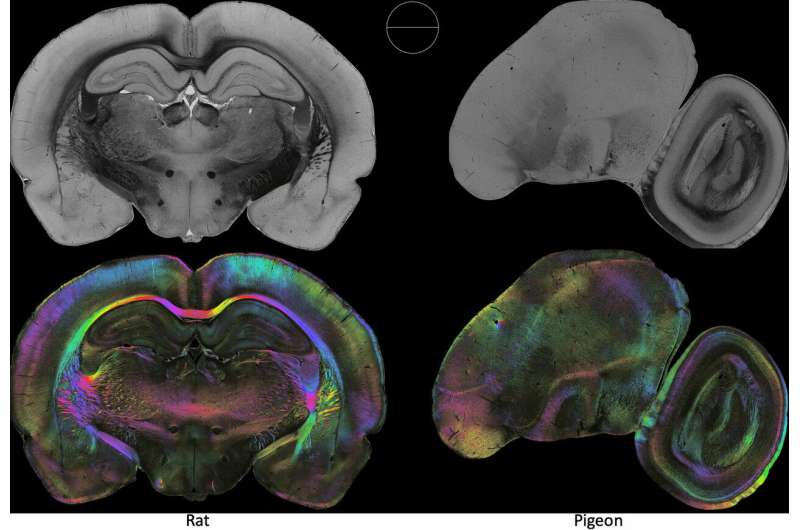The surprising organisation of avian brains

Birds and mammals have the largest brains in relation to their body. Apart from that, however, they have little in common, according to scientific opinion since the 19th century: mammalian brains have a neocortex, i.e. a cerebral cortex that's made up of six layers and arranged in columns perpendicular to these layers. Avian brains, on the other hand, look like clumps of gray cells.
"Considering the astonishing cognitive performance that birds can achieve, it seemed reasonable to suspect that their brains are more organized than expected," says Professor Onur Güntürkün, Head of the Biopsychology Research Unit at the RUB Faculty of Psychology. He and his former doctoral students Dr. Martin Stacho and Dr. Christina Herold proved this in several experiments.
In the first step, the researchers deployed a new method perfected by the Düsseldorf and Jülich teams: so-called 3-D polarized light imaging, or 3-D PLI for short, is capable of displaying the orientation of individual nerve fibers. To the researchers' surprise, an analysis of the brains of various birds revealed an organization that is similar to that in the mammalian brain: here too, the fibers are arranged horizontally and vertically in the same way as in the neocortex.
In further experiments, the researchers used tiny crystals, which are absorbed by nerve cells in brain slices and transport them to their smallest dendrites, to examine the interconnection of cells in the bird brain in detail. "Here, too, the structure was shown to consist of columns, in which signals are transmitted from top to bottom and vice versa, and long horizontal fibers," explains Onur Güntürkün. However, this structure is only found in the sensory areas of the avian brain. Other areas, such as associative areas, are organized in a different way.

Some birds are capable of astonishing cognitive performances to rival those of higher developed mammals such as primates. For example, ravens recognize themselves in the mirror and plan for the future. They are also able to put themselves in the position of others, recognize causalities and draw conclusions. Pigeons can learn English spelling up to the level of six-year-old children.

More information: A cortex-like canonical circuit in the avian forebrain, Science, 2020, science.sciencemag.org/cgi/doi … 1126/science.abc5534
Journal information: Science
Provided by Ruhr-Universitaet-Bochum


















